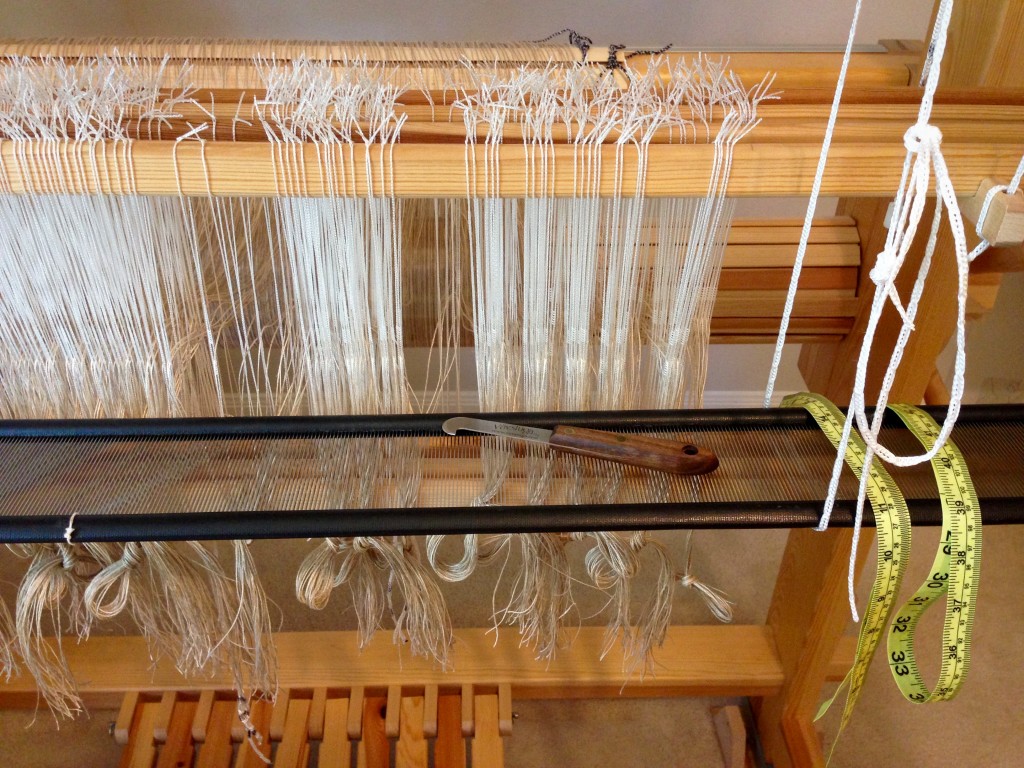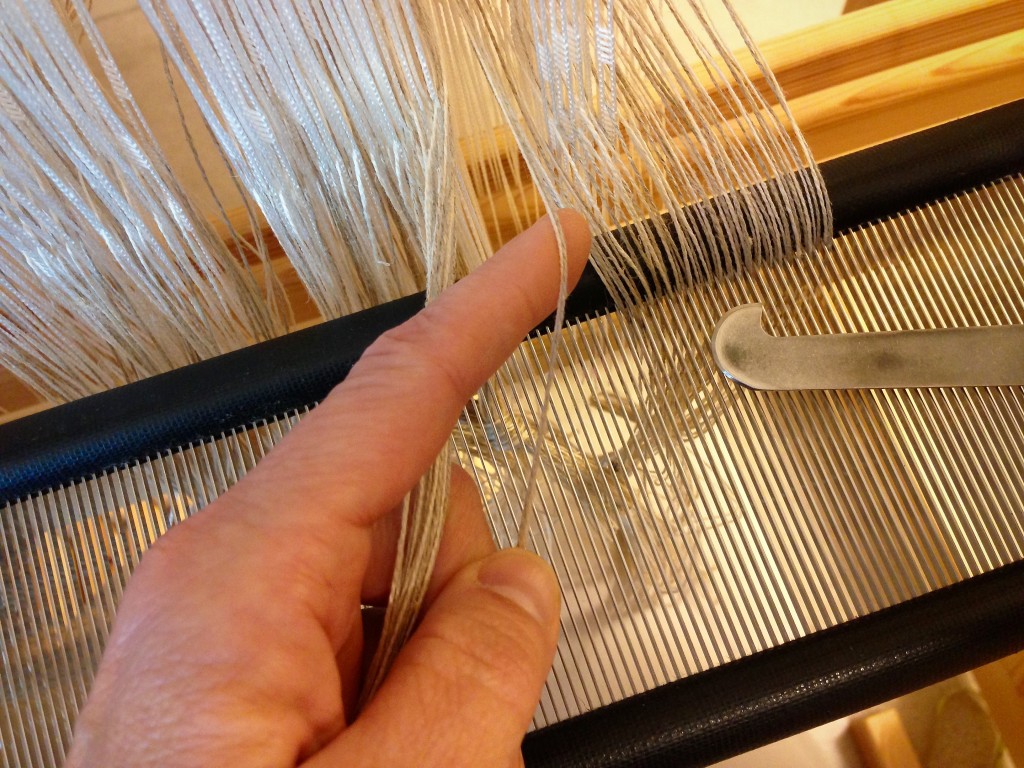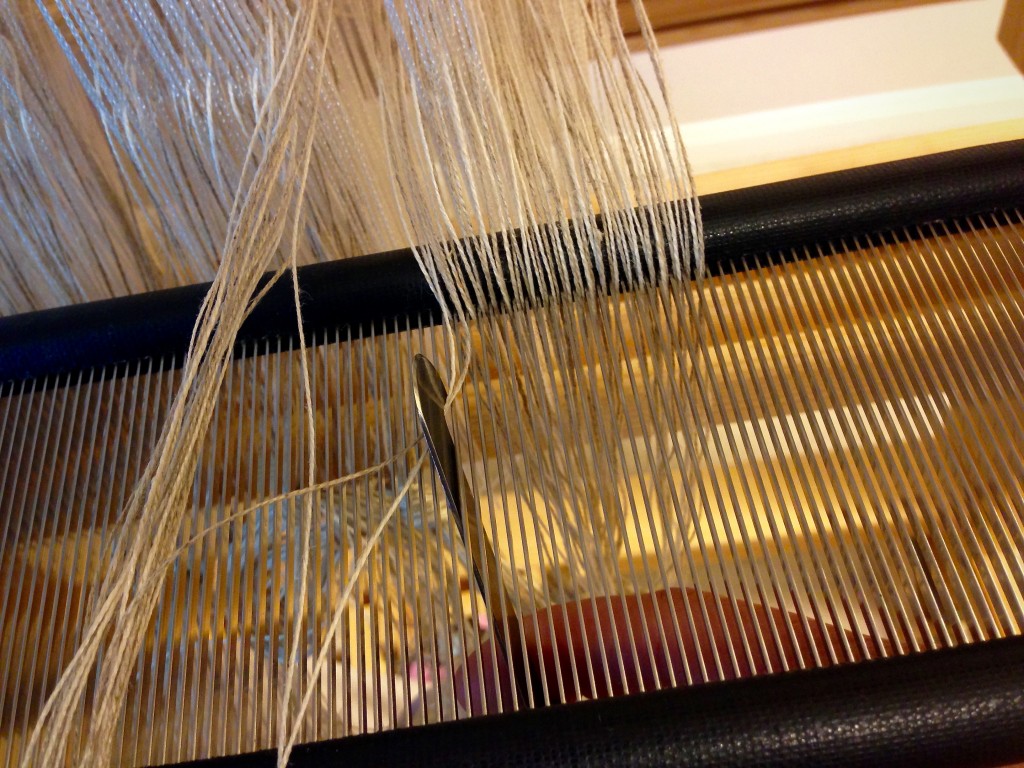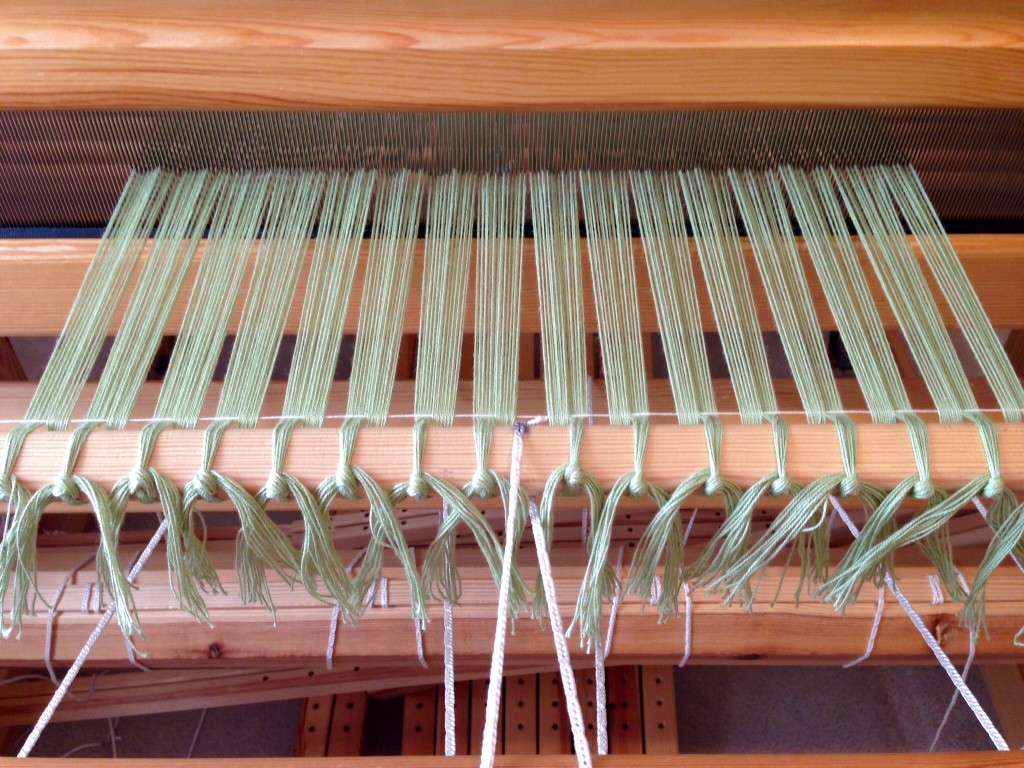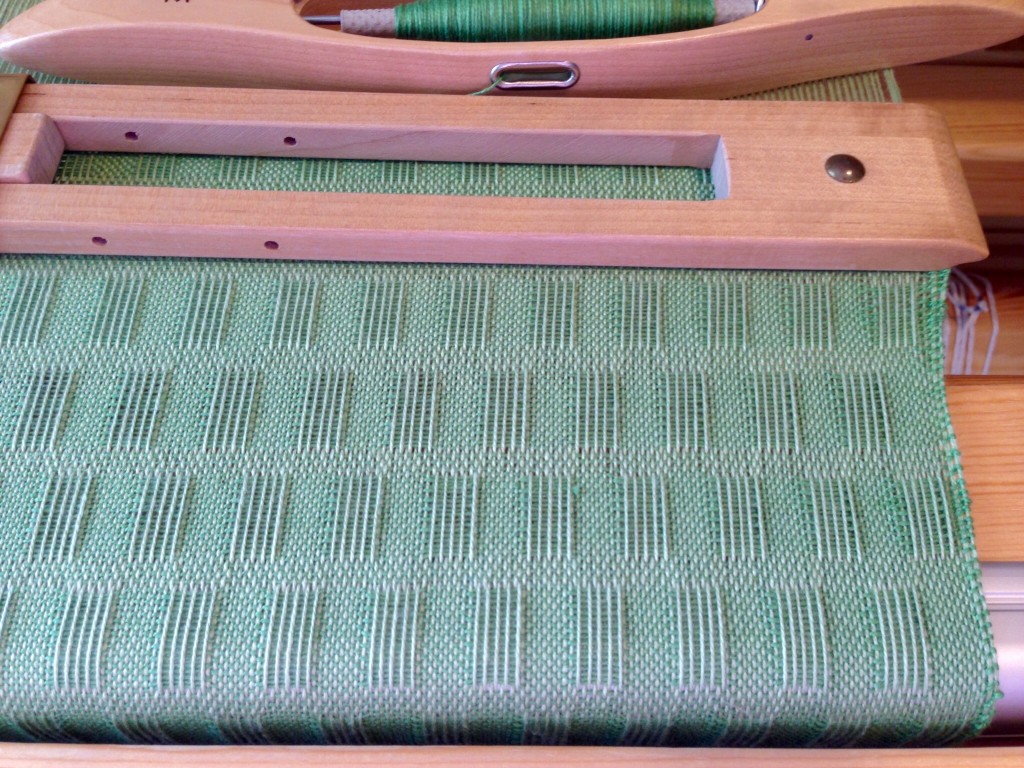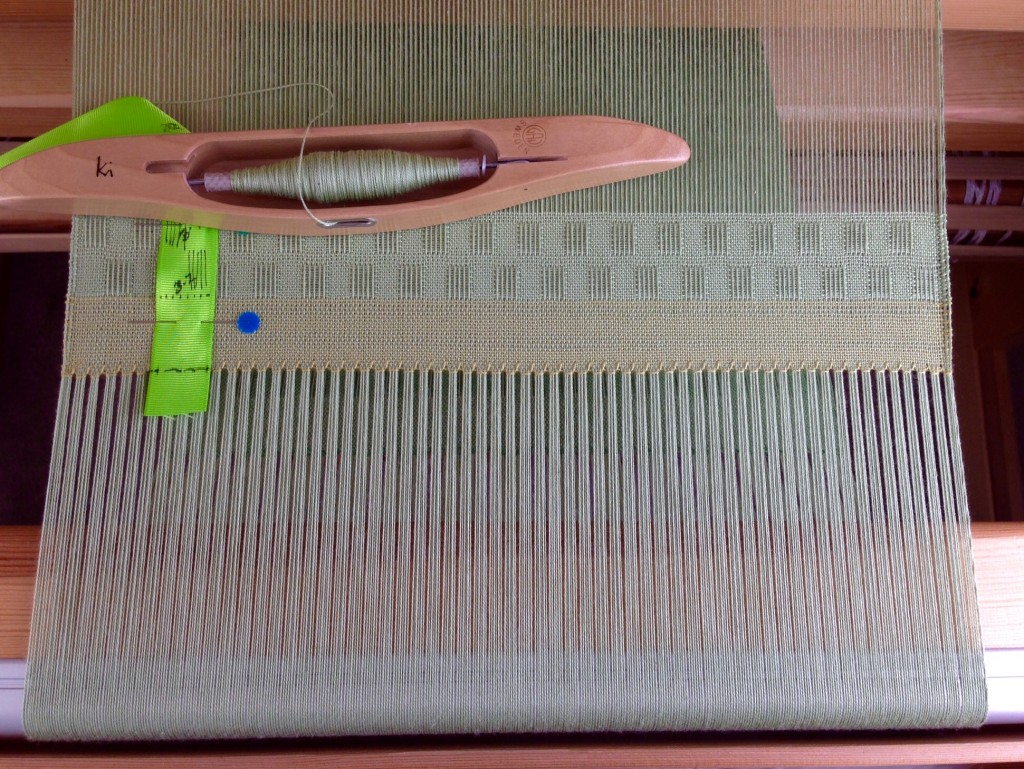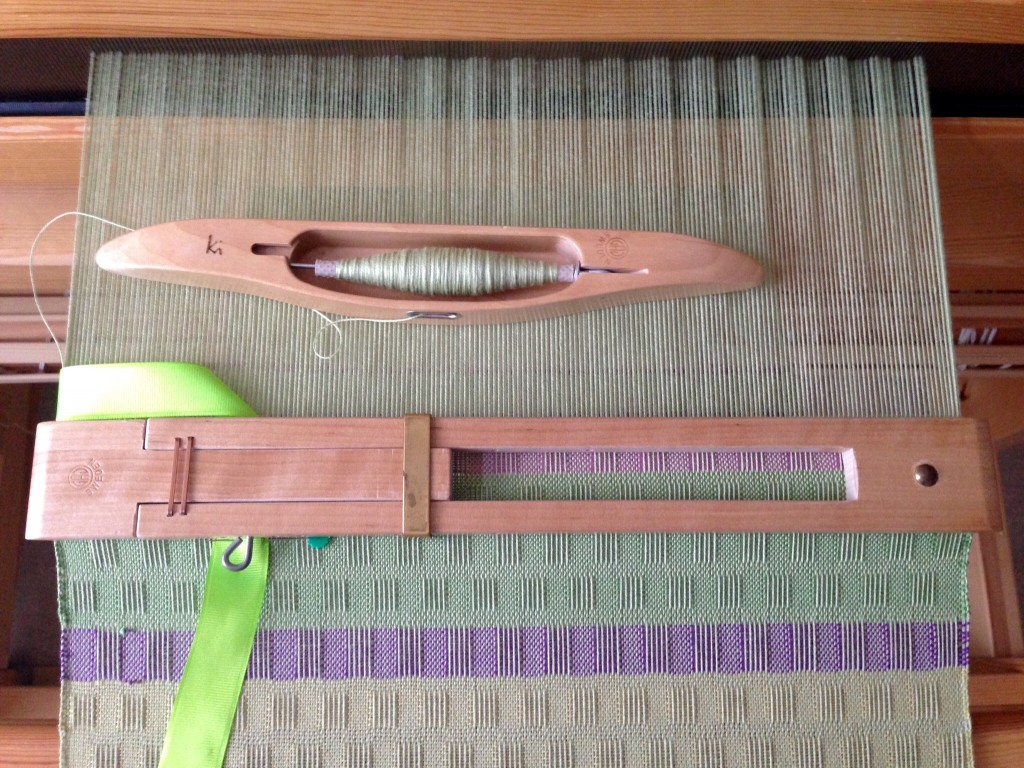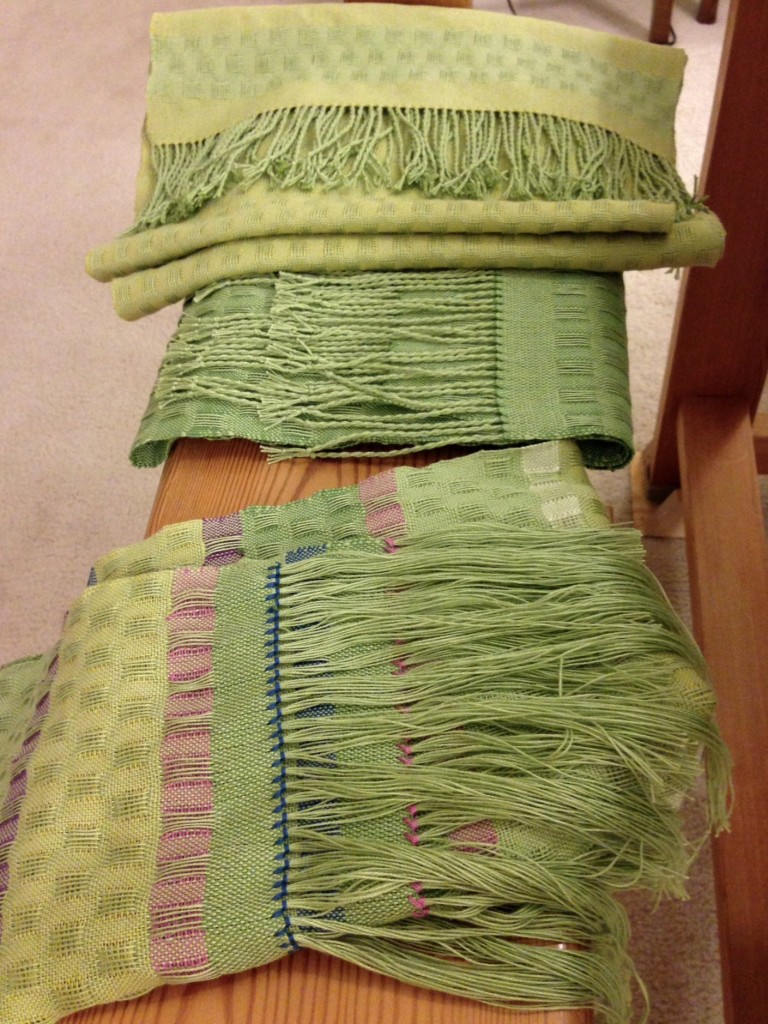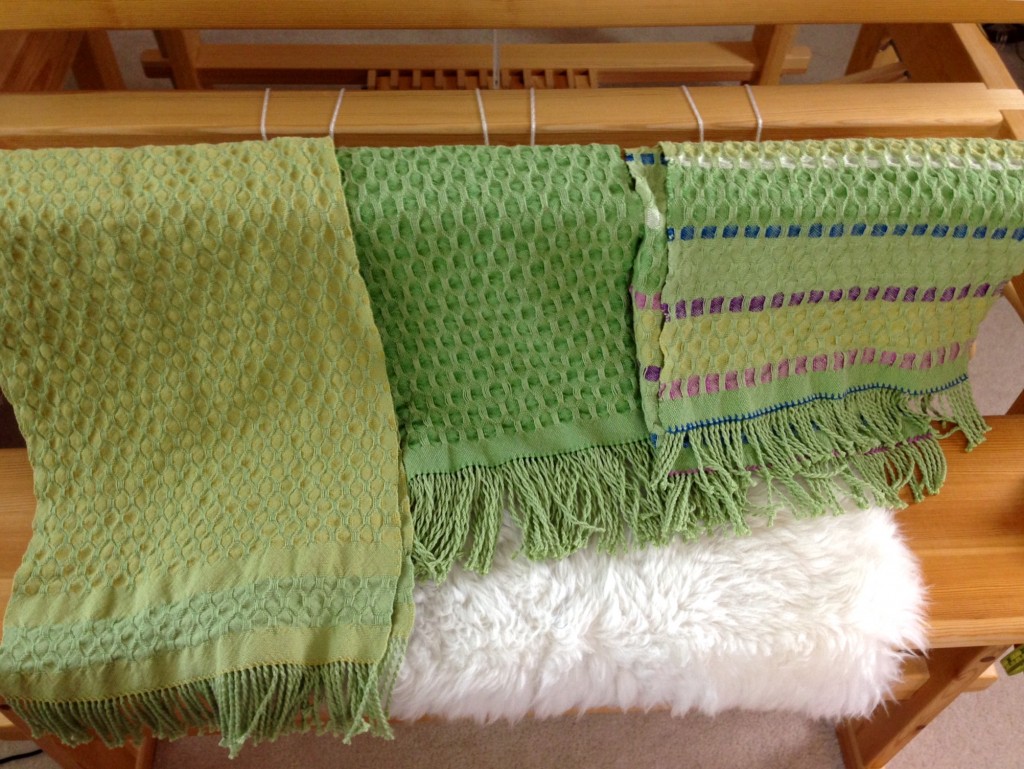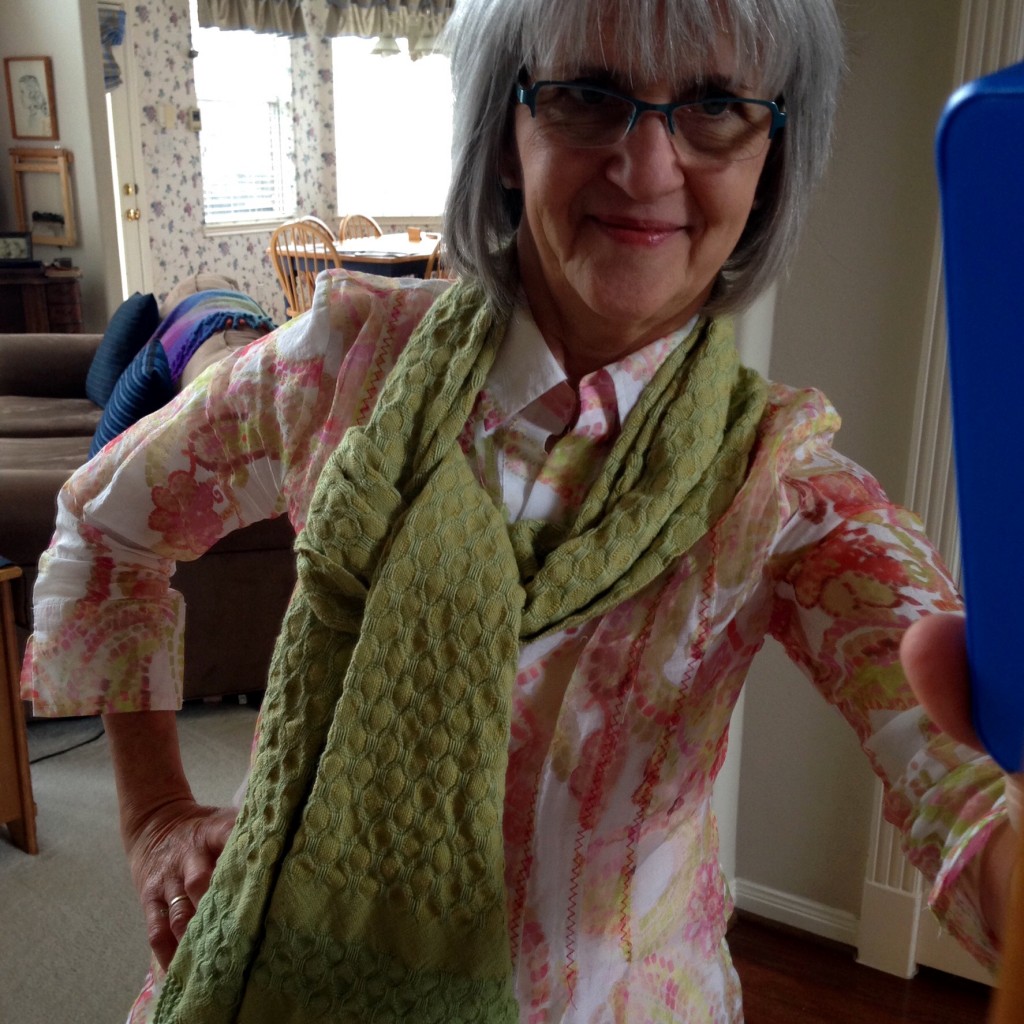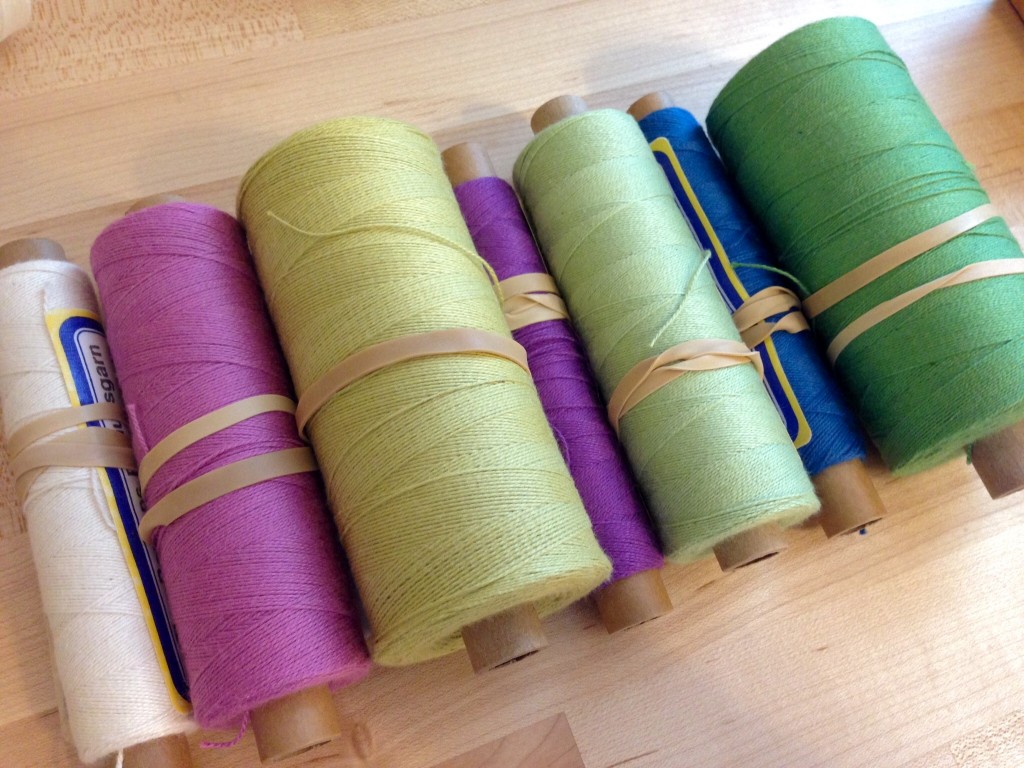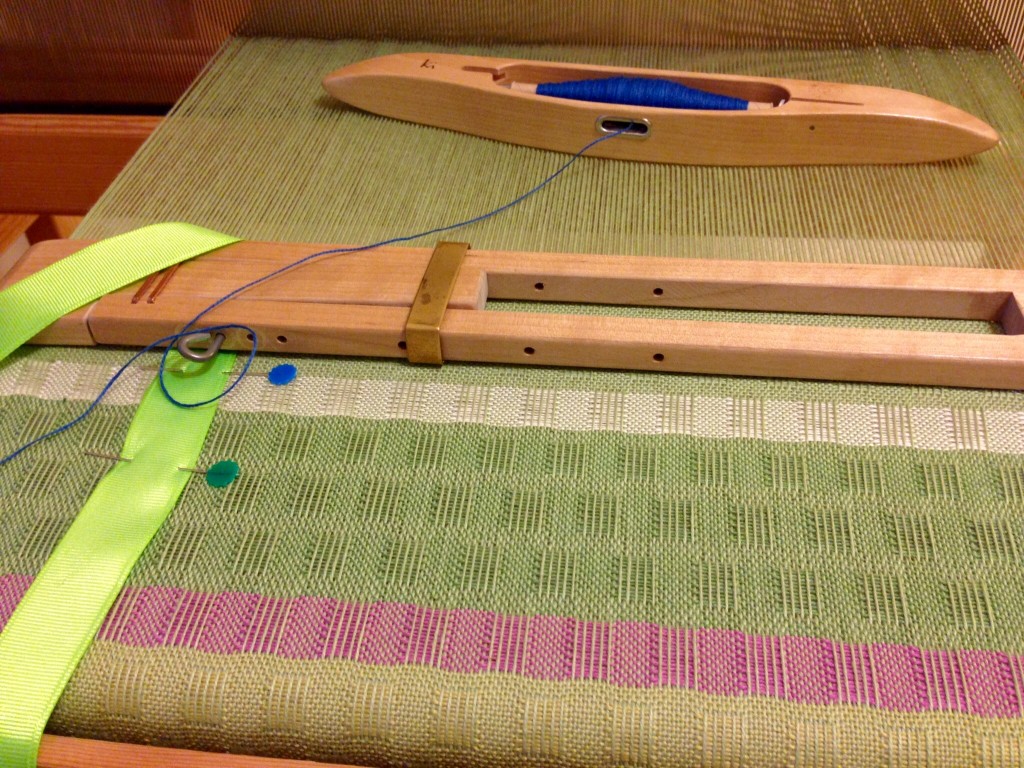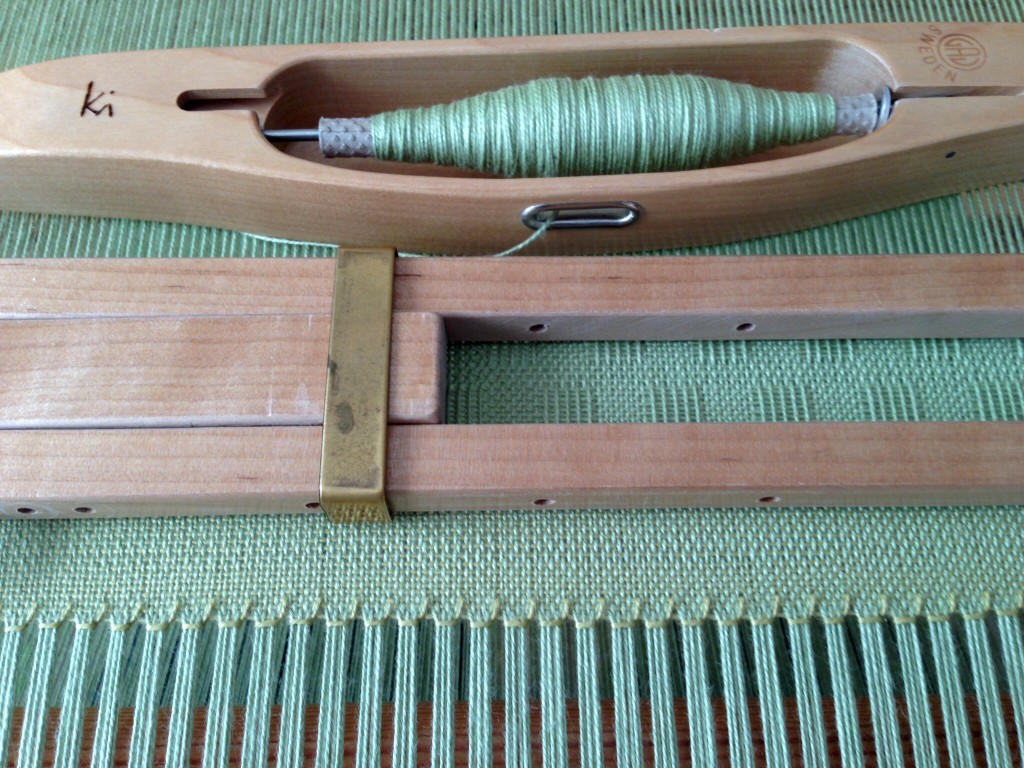Linen is special. This is nothing new. Even in biblical history, linen is mentioned as fabric for sacred purposes. But weaving with linen requires attentiveness. The inelasticity of linen means extra care is needed in every stage of dressing the loom and weaving. Of first importance is an even warp tension.
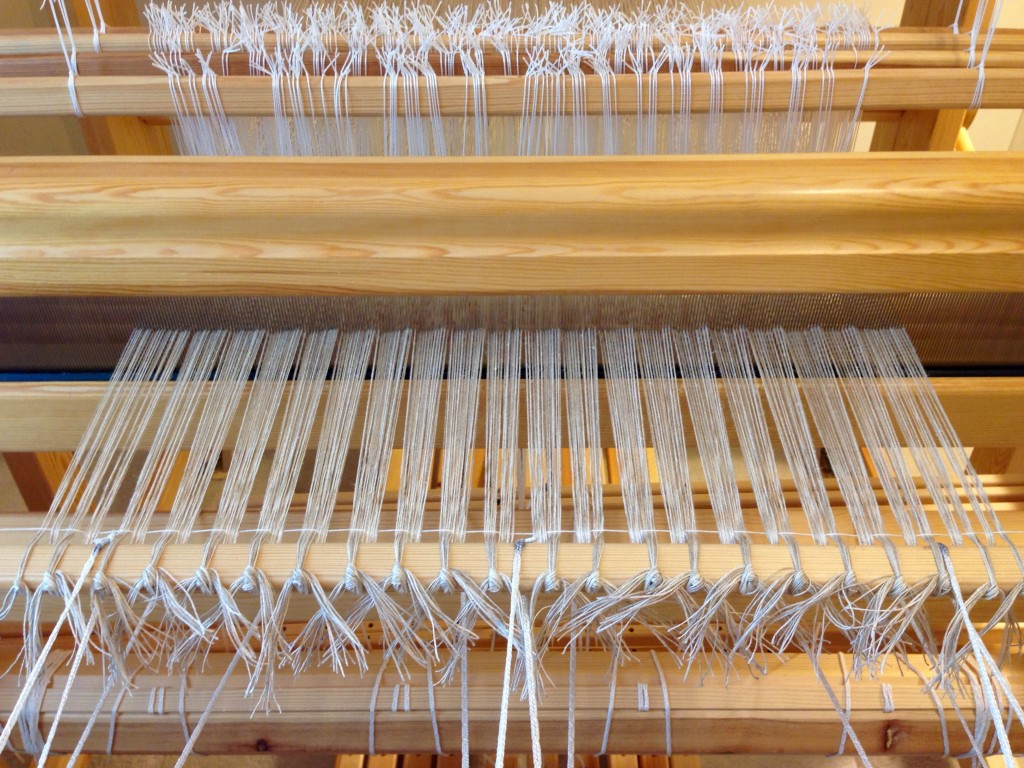
This method of tying on* is perfect for weaving rag rugs. The 12/6 cotton rug warp stays snugly in place. Not so with linen. The even warp tension that I have been so careful to maintain can be lost in a moment. The sneaky linen is smooth and slick enough to tie on easily, and then loosen up just as easily. So I take the double precaution of tying an additional overhand knot, AND moistening that knot with a dab of water which helps the linen grip itself. I never have to worry about these knots slipping loose.
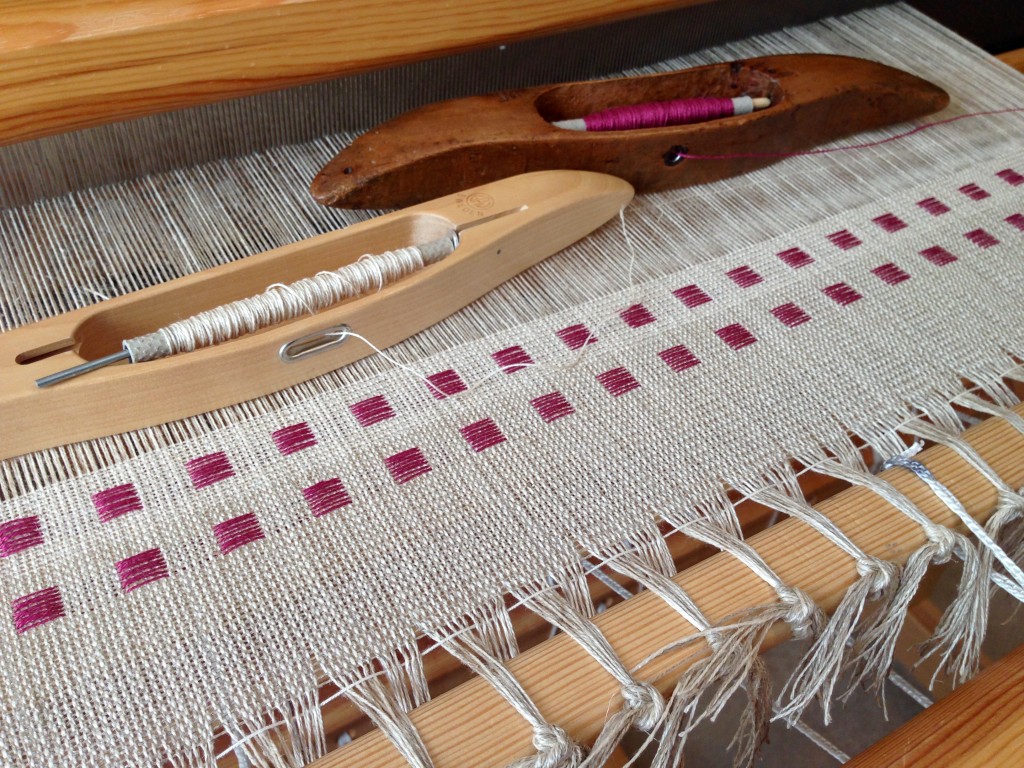
What do you worry about? I have bigger things I worry about, too. But my heavenly Father assures me that He has secured all the knots that concern me. “Don’t worry,” he tells me. “Your Father knows your needs.” Be attentive to keep first things first. Put yourself in the Father’s care, and find that he takes care of you. Special you.
May you forget your worries.
With you,
Karen
* I learned this method of tying on from Becky Ashenden. You can see it fully explained by Becky, with pictures, in Dress Your Loom the Vävstuga Way: A Benchside Photo-guide.

